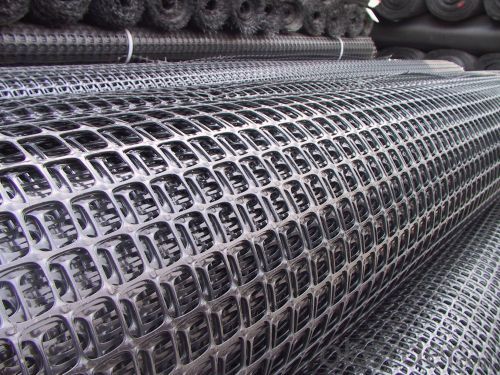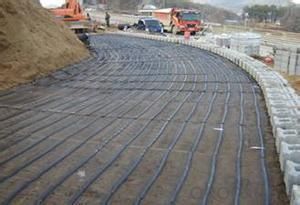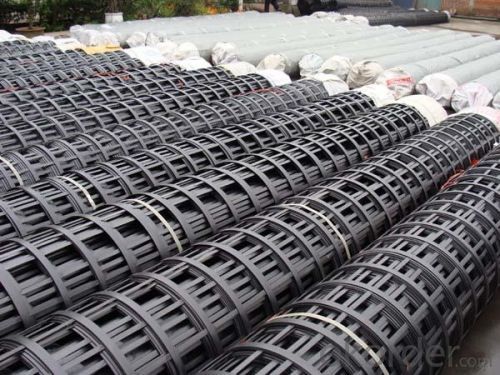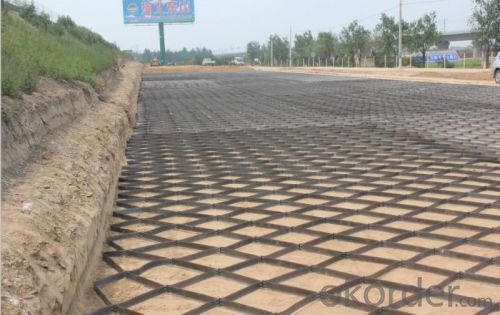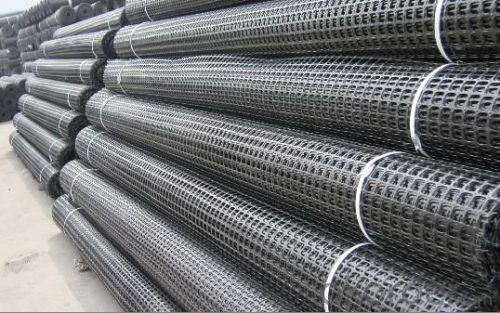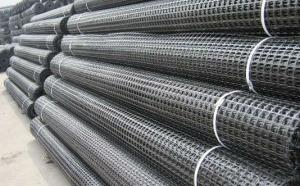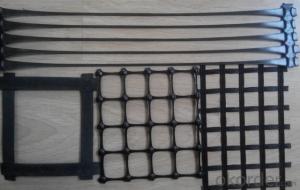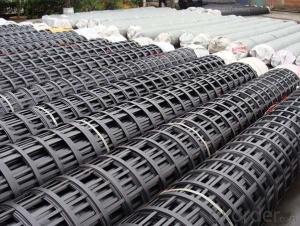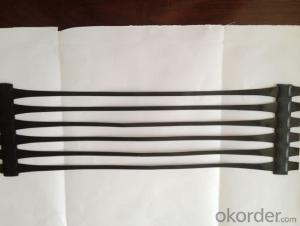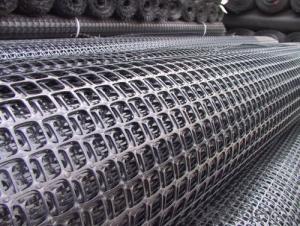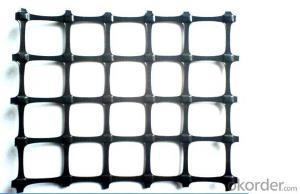Extensible PP Biaxial Geogrids for Road Construction from Manufacturer
- Loading Port:
- China main port
- Payment Terms:
- TT OR LC
- Min Order Qty:
- 20000 m²
- Supply Capability:
- 2000000 m²/month
OKorder Service Pledge
OKorder Financial Service
You Might Also Like
Biaxial PP Geogrid,
Biaxial geogrids are made of macromolecule polymer by the process of being stretched out, formed into lamella, punched regularly and then longitudinal and transverse elongated. They have much higher longitudinal and transverse tensile strength. These structures can supply alinking system to soil, which be used broadly to enable the permanent bearing capacity of roadbed.
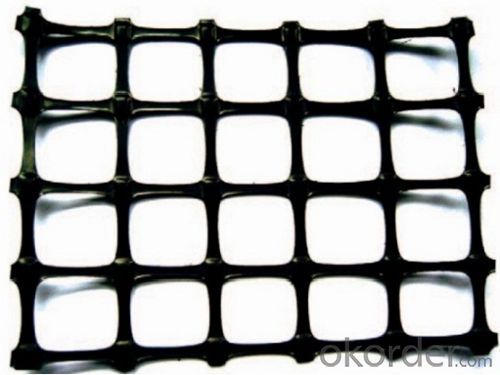
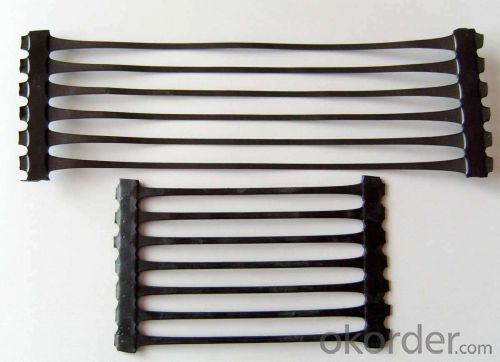
Biaxial Geogrid Features:
1. high tension resistance.
2. high plane torsion resistance modulus.
3. good creep resistance and stable chemical nature.
4. high mechanic damage resistance.
5. reduce filling thickness, improve bearing capacity.
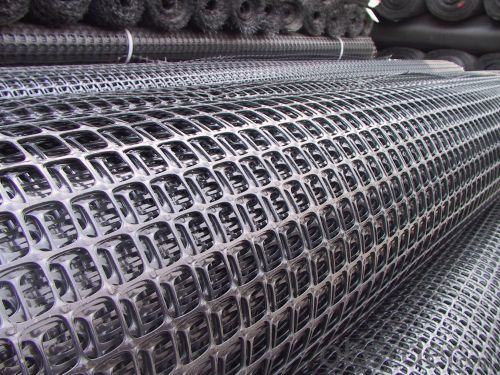
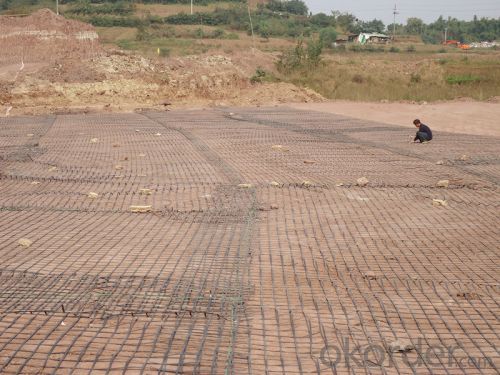
The main function as follows:
1.Reinforce the base, efficiently allot and diffuse the pressure, prolong the using time;
2.Increase the load-bearing capabilities;
3.Avoid the base becoming deformed and creaking (for the material washed away);
4.Improve the endure, reduce the pressure of the blocking wall, save the cost, prolong the using time, and reduce the servicing;
5.Reduce the crook and track, delay 3-9 times of the appearance of the crack, reduce 36% of the thickness of the structure by adding the geogrid into the base and cover of the road,
6.Be applicable of all kinds of soil;
Geogrid Usages:
1.Increasing the bearing capacity of roadbed and prolonging its service life.
2.Preventing road surface and foundation from subsiding or cracking and keeping clean and beautiful ground surface.
3.Being convenient for construction,saving time and labor, shortening construction period and maintenance cost.
FAQ:
Q: What is your MOQ?
A: Normally, 1000 m2 per order.
Q: What is your delivery time? Can we have it sooner?
A: 2 days for sample, 3-5 days against 1x40HQ
Q: What is your payment terms?
A: T/T, Paypal (3% surcharge), Western Union or 30% deposit 70% L/C.
- Q: How do geogrids help in reducing the risk of settlement of structures?
- Geogrids help in reducing the risk of settlement of structures by providing reinforcement to the soil or fill material beneath the structure. They create a stronger and more stable base, distributing the load evenly and preventing excessive settlement. This helps to maintain the integrity of the structure and reduce the potential for damage or failure due to settlement.
- Q: Do geogrids require maintenance?
- Yes, geogrids do require maintenance. Routine inspection is necessary to ensure their proper functioning and longevity. This may involve checking for any signs of damage, such as tears or punctures, and addressing any issues promptly. Additionally, regular cleaning and removal of debris is important to prevent clogging and maintain the effectiveness of geogrids. Overall, proper maintenance helps to extend the lifespan and performance of geogrids in various applications.
- Q: How to distinguish from the appearance of plastic geogrid and fiberglass geogrid
- This is a direct look at the different products.
- Q: What are the different materials used to manufacture geogrids?
- Geogrids are commonly manufactured using materials such as polyester, polypropylene, fiberglass, and steel.
- Q: What is the typical weight of a geogrid roll?
- The typical weight of a geogrid roll can vary depending on the specific type and size of the geogrid. However, geogrid rolls generally range in weight from 50 to 500 pounds.
- Q: How do geogrids improve the performance of retaining walls?
- Geogrids improve the performance of retaining walls by providing reinforcement and stability. They are typically made of high-strength materials and are installed within the soil mass behind the wall. These grids distribute the loads exerted on the wall more evenly, reducing the pressure on the wall itself. This reinforcement prevents excessive movement, soil erosion, and potential wall failure. Additionally, geogrids enhance the overall strength and durability of the retaining structure, allowing for the construction of taller and more efficient walls.
- Q: What is the single geogrid 60kN/m
- Should be a one-way geogrid, 60kN/m grid strength
- Q: How many grams per square meter of 15KN Geotextiles
- The plastic woven geotextile 15KN squared Mick weight is 120 grams
- Q: How do geogrids improve the performance of reinforced soil structures?
- Geogrids improve the performance of reinforced soil structures by providing additional strength and stability. They act as a reinforcement material, distributing the forces and loads evenly throughout the structure. This helps to prevent soil erosion, slope failure, and settlement, ultimately enhancing the overall durability and longevity of the structure.
- Q: Can geogrids be used in soil stabilization for erosion control?
- Yes, geogrids can be effectively used in soil stabilization for erosion control. Geogrids are synthetic materials that are commonly placed within the soil to enhance its stability and prevent erosion. They provide reinforcement and structural support to the soil, reducing its susceptibility to erosion caused by water or wind. By improving the soil's strength and preventing movement, geogrids help to stabilize slopes, embankments, and other areas prone to erosion, making them an ideal solution for erosion control in soil stabilization projects.
Send your message to us
Extensible PP Biaxial Geogrids for Road Construction from Manufacturer
- Loading Port:
- China main port
- Payment Terms:
- TT OR LC
- Min Order Qty:
- 20000 m²
- Supply Capability:
- 2000000 m²/month
OKorder Service Pledge
OKorder Financial Service
Similar products
Hot products
Hot Searches
Related keywords







